Divided we drive: America's EV adoption gap
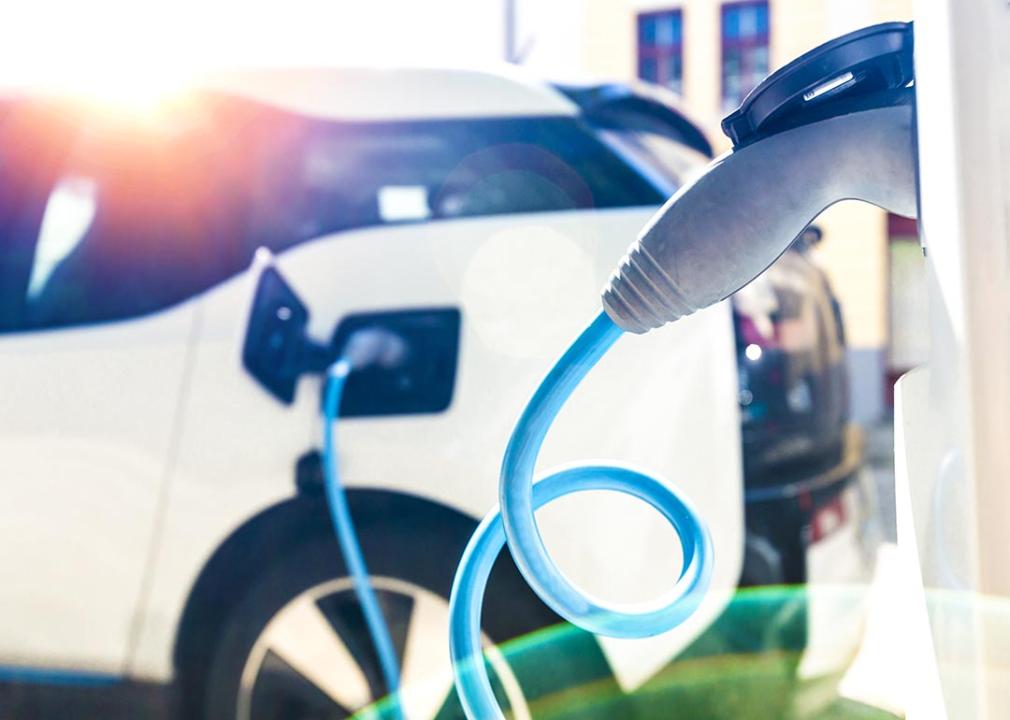
moreimages // Shutterstock
Divided we drive: America’s EV adoption gap
Closeup of an EV’s charger nozzle while the car is being recharged at a station.
American roads are dominated by gasoline-powered vehicles, but that is gradually changing. The government is placing increasingly strict requirements for vehicle emissions on car manufacturers, which has accelerated their output of electric vehicles (EVs). At the same time, U.S. consumers are driving demand for EVs, buying more every year.
However, interest and adoption rates are uneven across the country. There are many barriers to buying EVs, including higher purchase prices, concerns about range and battery reliability.
Given these competing forces, Motointegrator worked with the research experts at DataPulse to better understand what’s driving — and hindering — the EV transition. Here is a look at the EV trends across the country and what they say about the country’s transition.
![]()
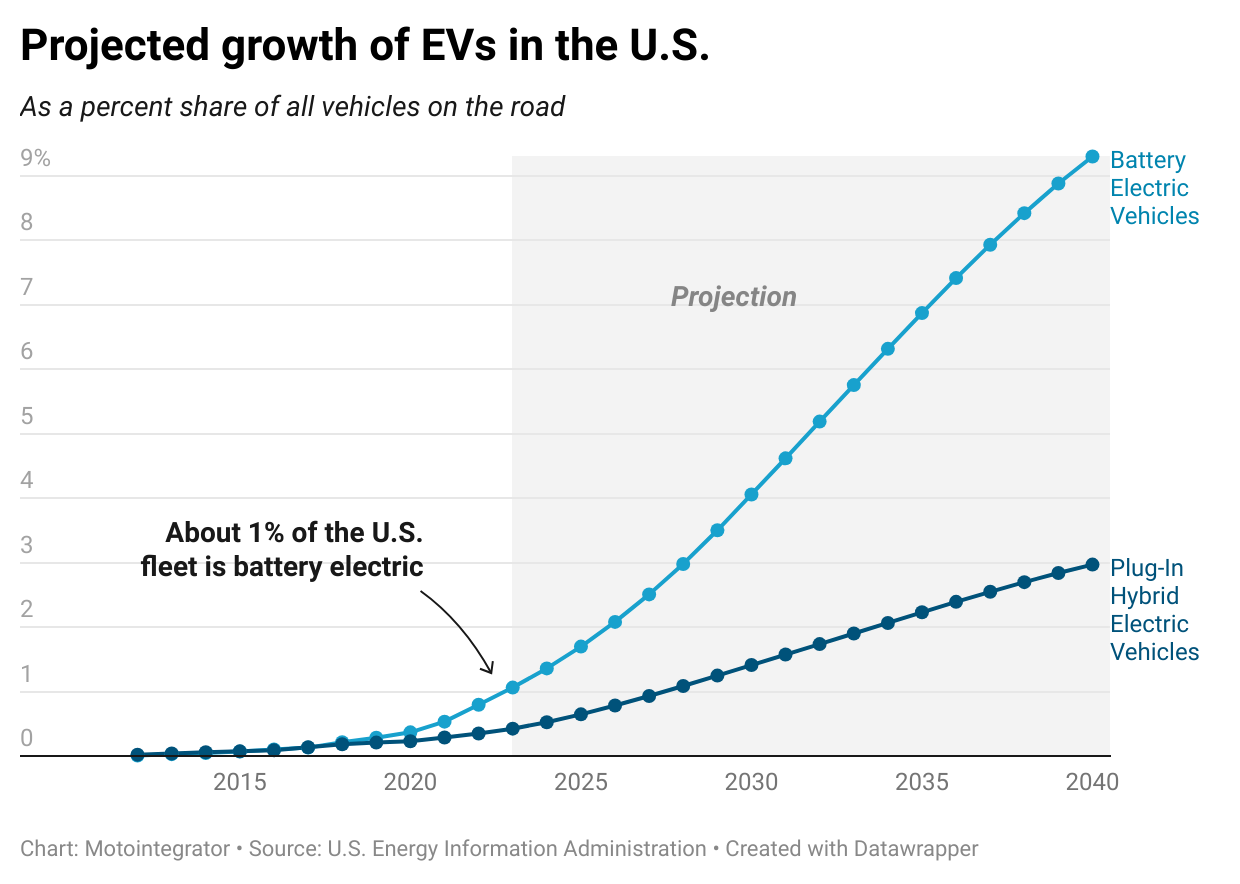
Motointegrator
A gradual shift to electric
Graph showing Projected growth of EVs.
The journey toward electric mobility is gaining momentum, but battery-powered vehicles are not going to eclipse combustion engines any time soon. Current data shows that EVs make up about 1% of all vehicles on American roads today, a figure projected to rise to 9% by 2040, according to government estimates.
More than 283 million light-duty vehicles were registered in the country in 2022, but only 2.4 million were EVs, according to the most recent government statistics. In order to increase the percentage of EVs in its fleet, the U.S. has to put more of them on the roads while retiring their gas-powered counterparts. Currently, this is not happening at the same rate. The number of vehicles in operation is trending upward, as it generally has for decades, indicating that older vehicles are staying on the road longer. Indeed, a 2023 report from S&P Global found that the average age of vehicles hit a record high of 12.5 years, suggesting that Americans are holding on to their gas-guzzlers.
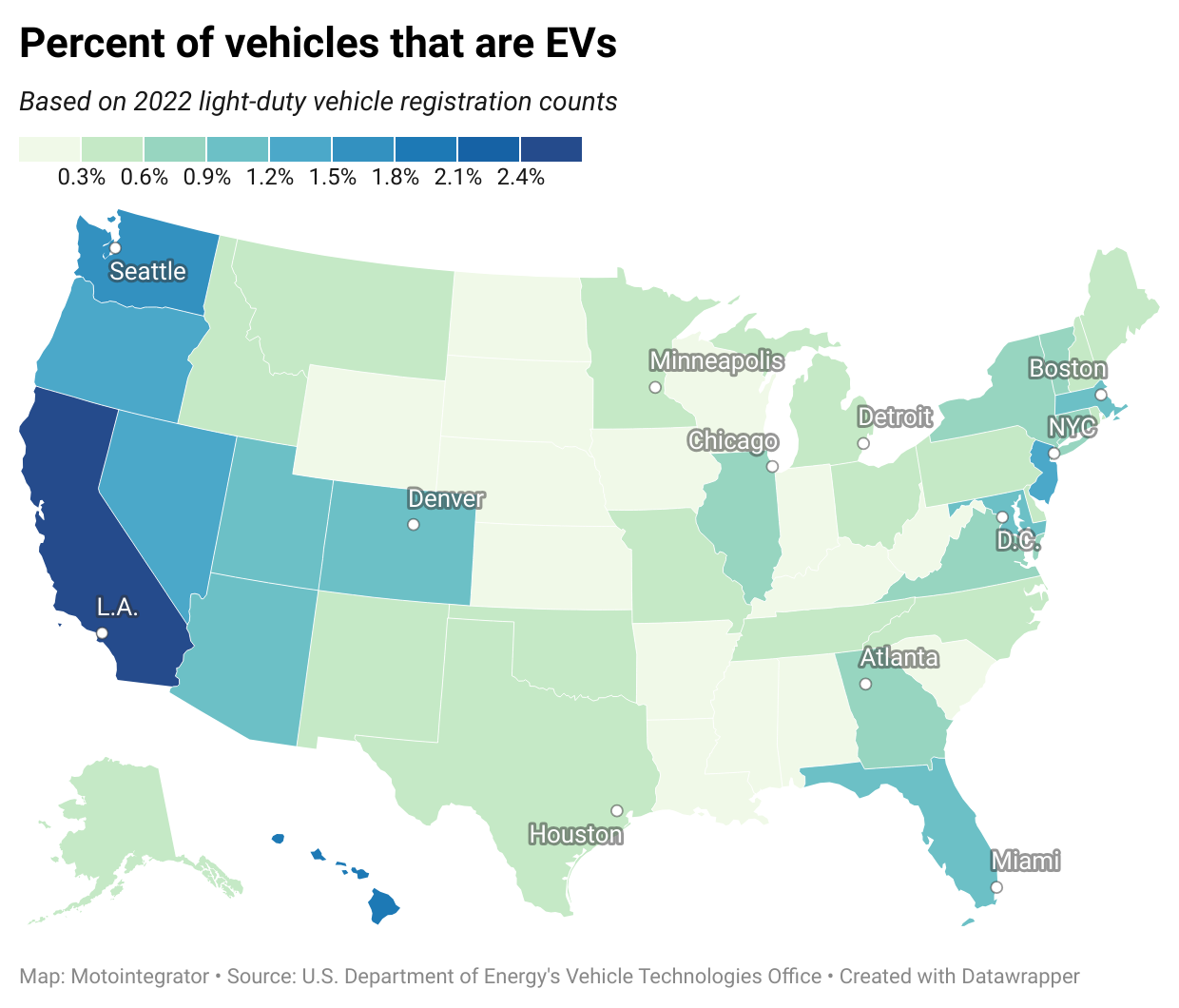
Motointegrator
California in high gear
Map showing percent of vehicles that are EVs.
EV uptake is not uniform across the country. A detailed look at the geographic distribution of light-duty vehicles shows California leading the nation in EV adoption, with 2.5% of its vehicles being electric — significantly higher than any other state, and in sharp contrast to states like North Dakota and Mississippi, where adoption rates are less than 0.1%
California is ahead of the curve thanks to a combination of aggressive state policies, a high number of tech-savvy consumers and robust charging infrastructure. The state is mandating that 35% of new 2026 cars, trucks and SUVs be zero-emissions vehicles (ZEVs), which include battery electric vehicles, plug-in hybrid electric vehicles and fuel cell electric vehicles. By 2035, California will require every new car to be a ZEV.
California’s ambitious goals have made automakers wary because other states that are following California’s legislation do not have as much consumer demand for EVs. Currently, 12% of Americans live in California, but a whopping 37% of the country’s EVs are registered there. As the chart below shows, Florida has the second-highest share of EVs, at a distant 7%.
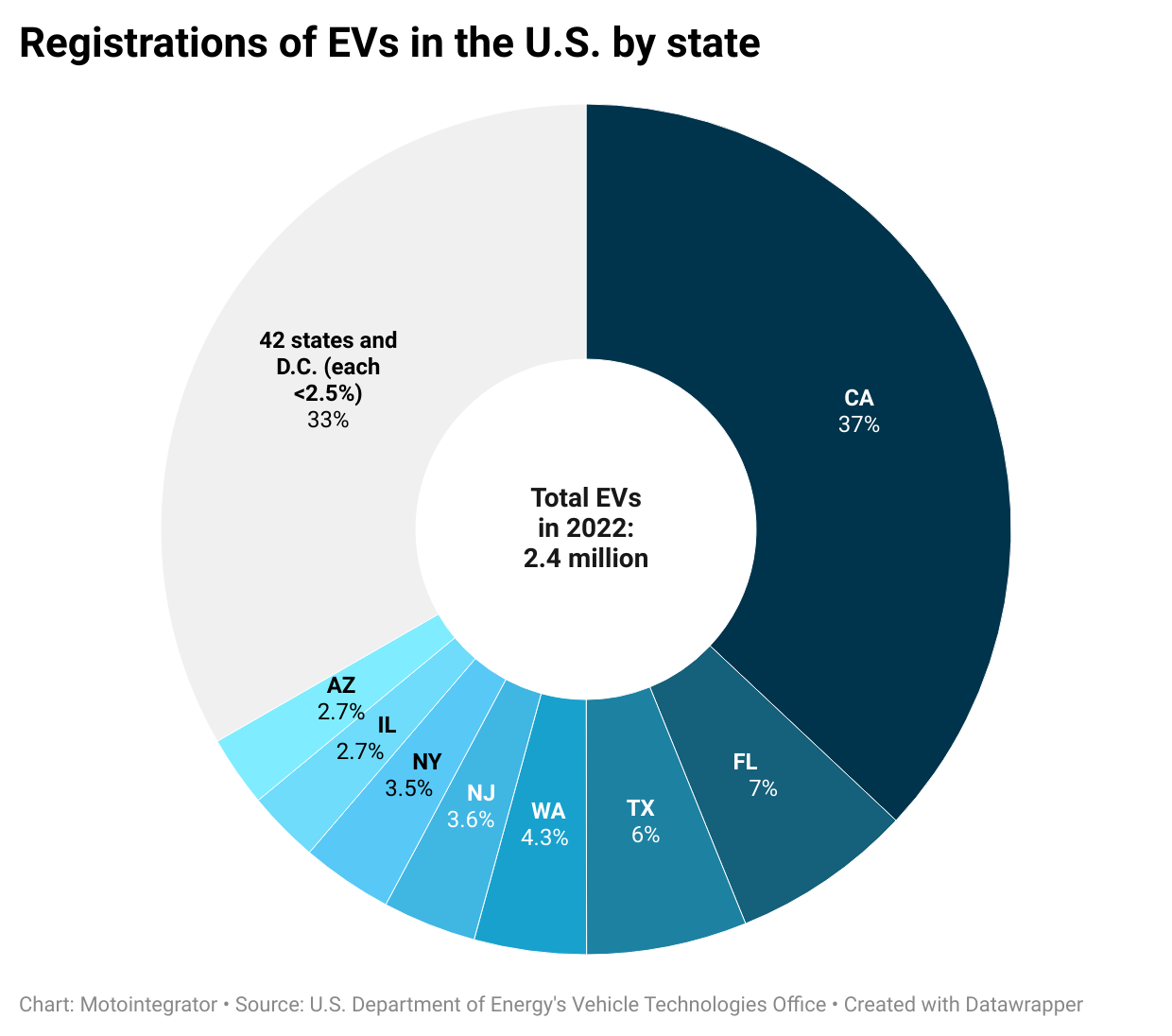
Motointegrator
Charging stations power EVs and empower drivers
Pie chart showing registrations of EVs.
Americans love to drive — and drive and drive. Therefore, a long distance road trip in an EV can trigger anxiety because their driving range typically spans only 150 to 300 miles. Numerous national surveys, including AAA’s Annual EV Consumer Sentiment Survey released in late 2023, have found that lack of charging stations is among the top deterrents for car buyers, second only to the cost.
Indeed, charging infrastructure is a critical component of the EV ecosystem. There has been a significant expansion in charging stations from some 20,000 in 2017 to nearly 70,000 in 2023. The number of individual charging ports has increased from about 50,000 to 180,000 nationwide over the same period.
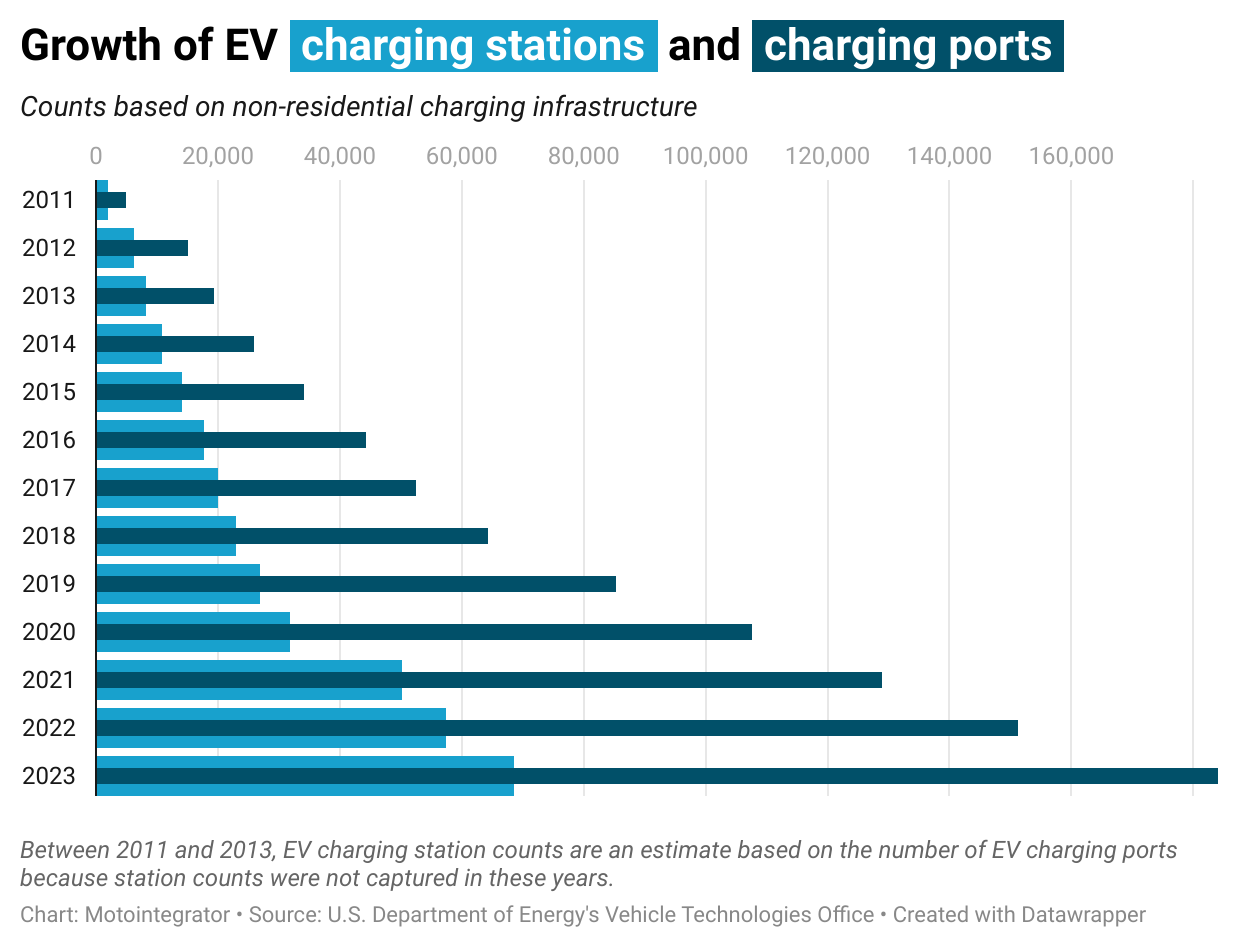
Motointegrator
Uneven distribution of charging stations a concern
Graphic showing growth of charging stations and ports.
However, charging stations are not evenly distributed. While 25% of the nation’s charging stations are in California, they are few and far between in states like Alabama, Mississippi and Louisiana. So-called “charging deserts” are potential barriers to EV adoption. On the other hand, seven states plus Washington, D.C., boast at least one station for every 1,000 registered cars, which could potentially reassure auto buyers in those areas.
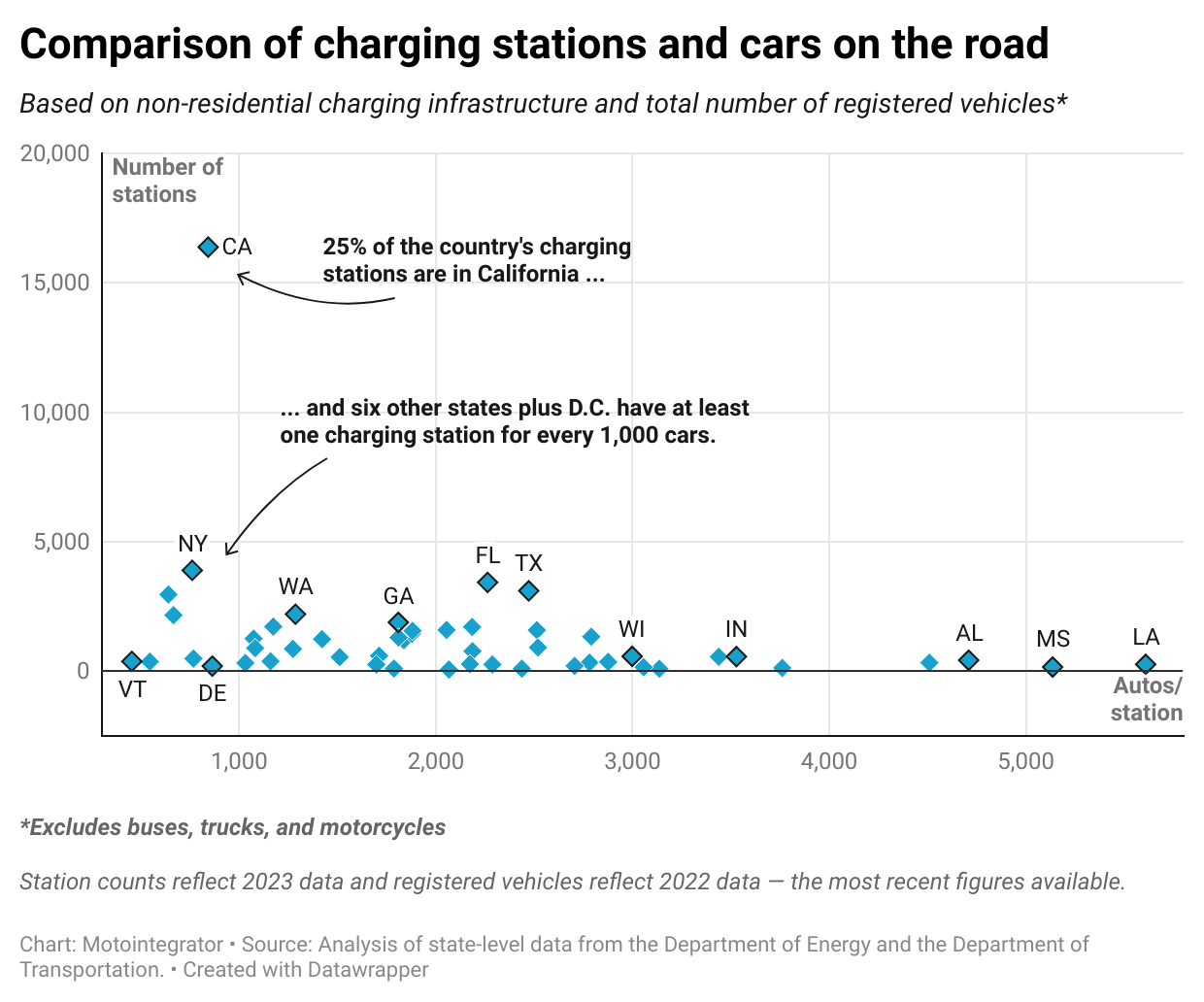
Motointegrator
Driving the market
Comparison of charging stations and cars.
From 2020 to 2023, EV sales in the U.S. jumped from less than 300,000 to 1.2 million annually, with the market share climbing to 7.6% in 2023. However, some analysts and automakers had predicted the EV market to perform better than it ultimately did that year.
In the U.S., there is more incentive to buy electric vehicles when gas prices are climbing, as they were during the pandemic and following Russia’s invasion of Ukraine. However, prices at the pump have fallen recently. That, coupled with high retail prices of EVs — the average price paid for a new EV in December 2023 was $50,789, according to Cox Automotive — are key reasons why EV sales dampened in 2023.
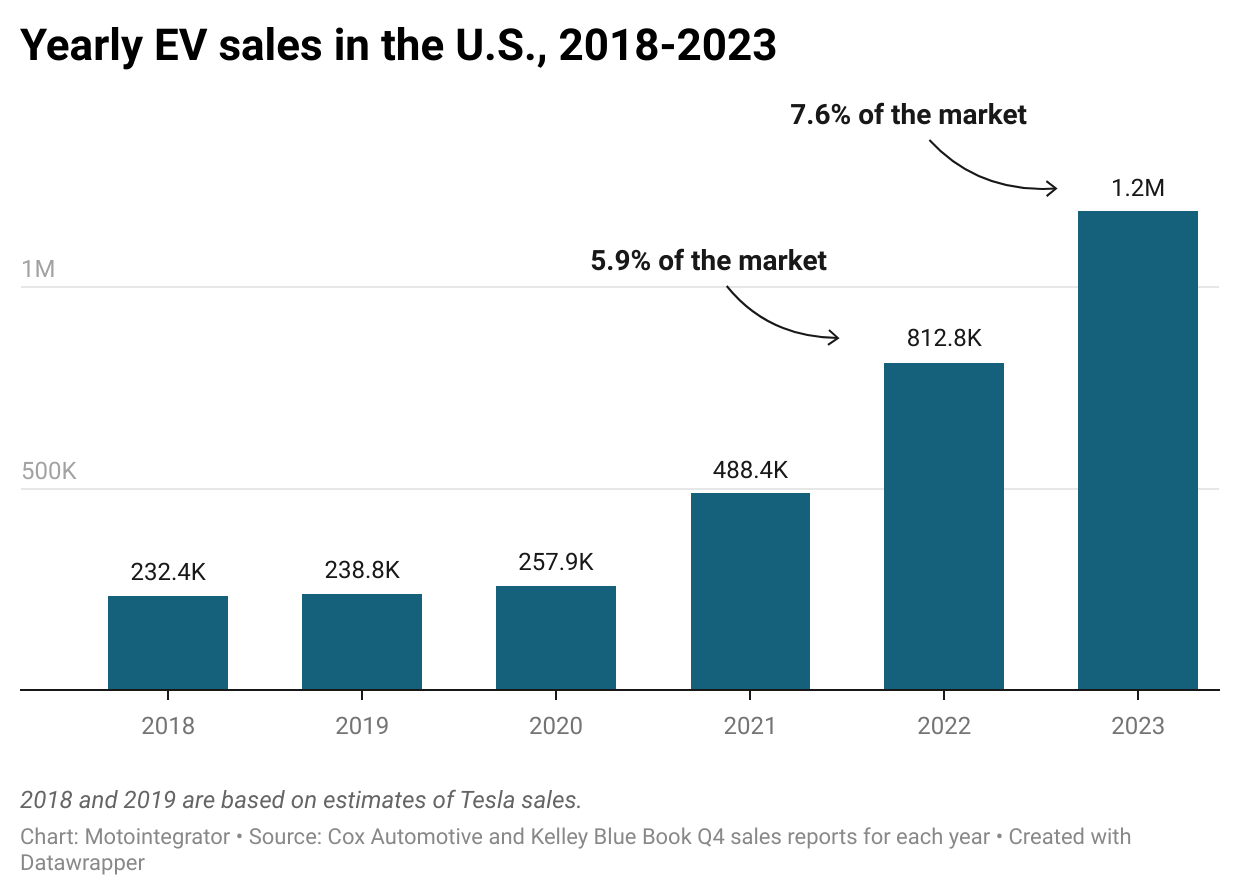
Motointegrator
Market domination
Bar chart showing yearly EV sales.
Tesla remains a dominant player, with its Model Y alone accounting for 33% of all EVs sold in 2023 and holding 55% of the EV market, according to Cox Automotive and Kelley Blue Book. (Chevrolet ranked second at 5.9% market share, and Ford ranked a close third, at 5.8%.)
In three years, Tesla has become a significant player, competing with longtime industry stalwarts that do not exclusively sell EVs.
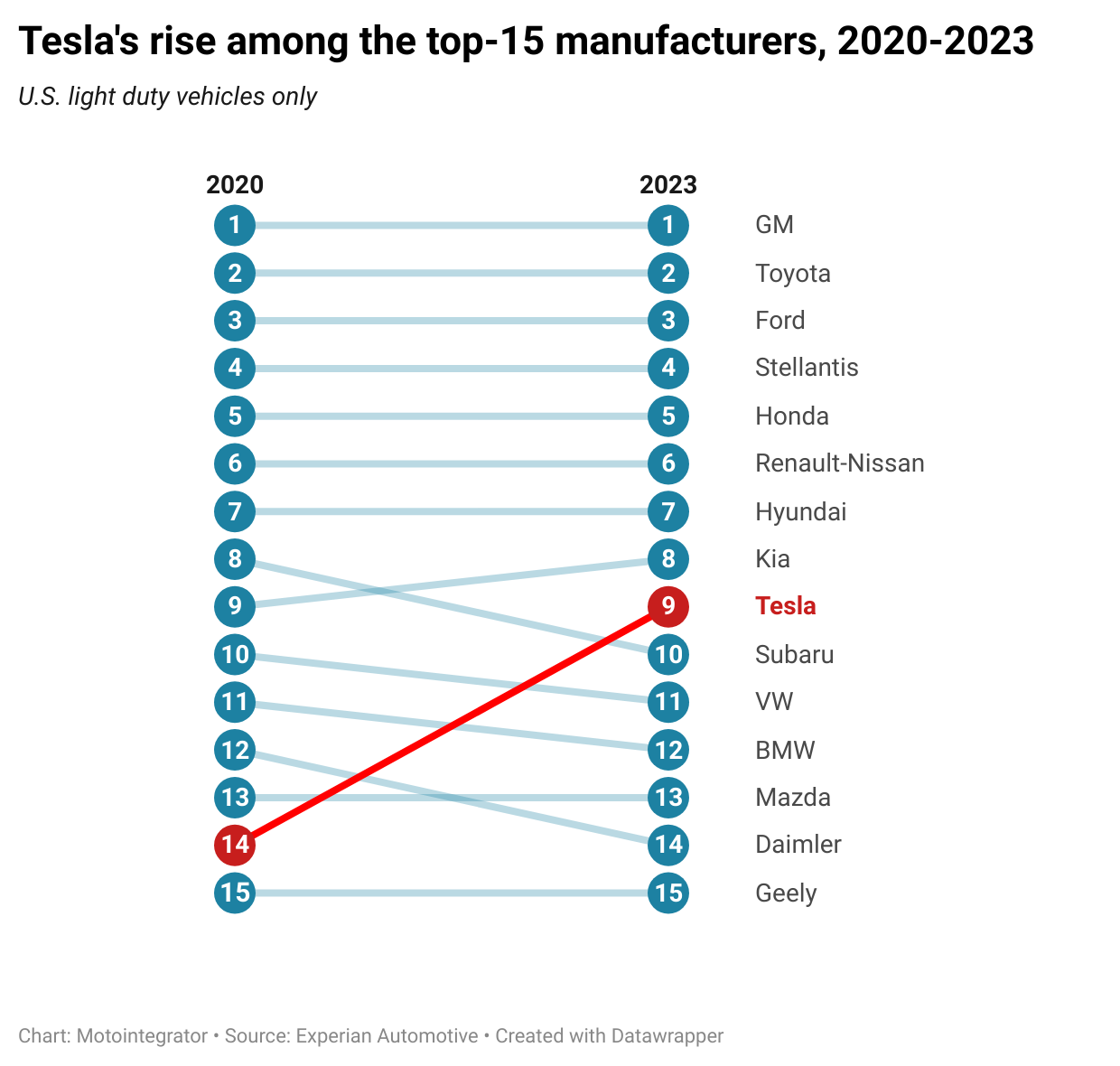
Motointegrator
Creating competition and diverse options
Graphic showing Tesla’s rise among the top 15 manufacturers from 2020-2023.
Though Tesla leads the EV market currently, the race is heating up and the competition from long-standing manufacturers and newcomers alike is creating a more robust and diverse supply of options for consumers.
Competition will also accelerate the development of technology that will improve battery range, reliability and safety. Consumer Reports has found that EVs have 79% more problems than conventional cars and that their batteries are at risk of failing in hot summer temperatures. On the safety front, EVs are less likely to catch fire than vehicles with combustion engines, according to data from Sweden. (The U.S. government does not report such statistics). However, EV fires are more dangerous because they pose the risk of electric shock and are extremely volatile and difficult to control.
Navigating a way forward
The promise of a cleaner, more efficient future is on the horizon. Cox Automotive and Kelley Blue Book predict that the EV share of the U.S. market in 2024 will reach 10%. That is certainly progress, but the U.S. has a long journey ahead to fully transition from gas to electric. That journey will be filled with both challenges and opportunities for policymakers, manufacturers and consumers.
At the legislative level, state policies, like the ambitious emissions regulations in California, will shape EV adoption rates by limiting the availability of new gas-powered cars. Meanwhile, federal policies like tax credits can curb the sticker price of expensive EVs and incentivize car buyers to go electric — even if gas prices remain lower.
EV adoption is also likely to increase with improved battery technology and charging infrastructure, as both developments can alleviate range anxiety. As more car manufacturers enter the market, technological advancement will increase. At the same time, those manufacturers will price their EVs competitively to win over consumers, leading to more electric vehicles on the road and cleaner air.
This story originally appeared on Motointegrator, was produced in collaboration with DataPulse, and reviewed and distributed by Stacker Media.